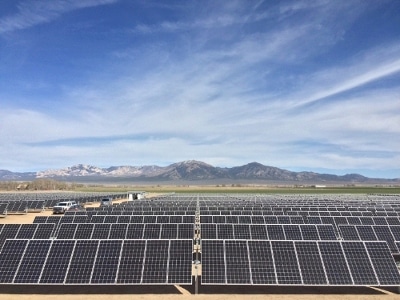It Could Be The Beginning Of A Solar Boom In Utah

The state of Utah is on the precipice of a solar revolution, but its trajectory could be disrupted by the looming expiration of the federal investment tax credit (ITC) for solar energy.
The state of Utah is on the precipice of a solar revolution, but its trajectory could be disrupted by the looming expiration of the federal investment tax credit (ITC) for solar energy.
Utah is just beginning to tap into its solar energy potential, ranking No. 5 in installed solar capacity out of all the Mountain states of the West. It now has enough solar energy installed to power 5,500 homes, however, more solar development is in the works that will bring Utah closer to its neighboring states, like Arizona, Nevada, Colorado and New Mexico, which are already booming with solar activity.
In reality, this spike in activity has already started.
In May, the largest operating solar power plant in Utah successfully came on-line. The South Milford solar facility in Milford, boasts 3.8 megawatts (MW) and is expected to generate enough electricity to power more than 500 homes, eliminating more than 12 million pounds of carbon dioxide per year, the equivalent of taking more than 1,200 cars off the road.
Furthermore, Utah is expected to jump from 32 MW of total installed solar capacity to over 500 MW in just the next two years. If you think about it, that would be adding enough solar capacity to power an additional 90,000 homes in the state.
Milestones like this are possible because of smart and effective public policies, like Utah’snet metering policy, renewable portfolio goal, sales tax exemption and tax credit, along with the federal ITC. Thanks to the federal ITC, more than 1,500 jobs were created in Utah in 2014, including from the state’s largest employer: Vivint Solar. Thousands more of Utahans can count on solar jobs too, as 500 MW of solar capacity are added over the next two years.
Consider what’s occurred in America since the federal ITC was enacted in 2006:
- solar has been added to 570,000 homes;
- more than 150,000 solar jobs have been created; and
- more than 19.5 gigawatts of solar capacity have been installed —representing 97 percent of all solar capacity ever installed.
To put the effectiveness of the federal ITC into more perspective, more solar was installed in one week in 2015 than was installed in all of 2006. And prior to 2006, only one state had over 100 MW in solar capacity. There are now 19 states that have reached 100 MW in cumulative capacity.
Utah is well on its way to shattering 100 MW, but threatening to derail its solar boom is the looming expiration of the federal ITC for solar energy.
By contrast, competing energy sources, such as fossil fuels, have had preferential treatment in the U.S. tax code for up to 100 years, while solar has had the federal ITC as an incentive for private investment for less than 10.
As an industry, we’re strongly urging Utah’s Congressional delegation to support extending the ITC for at least five years. By then, many analysts are predicting, solar will reach grid parity in most electricity markets, helping to create a level playing field among energy producers, which will benefit consumers, the U.S. economy and our environment.
Solar is an economic engine for America and its future in Utah should be bright.

